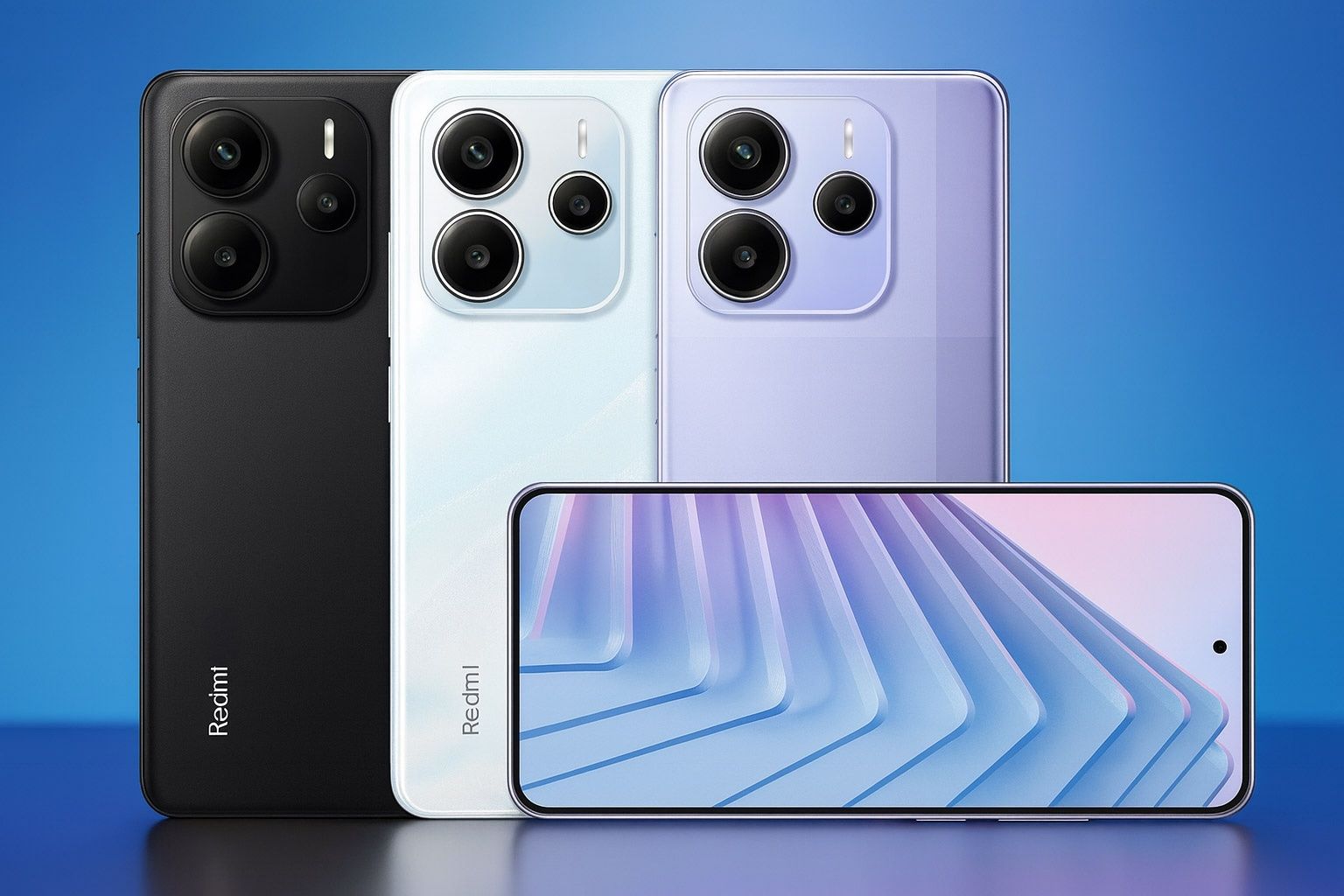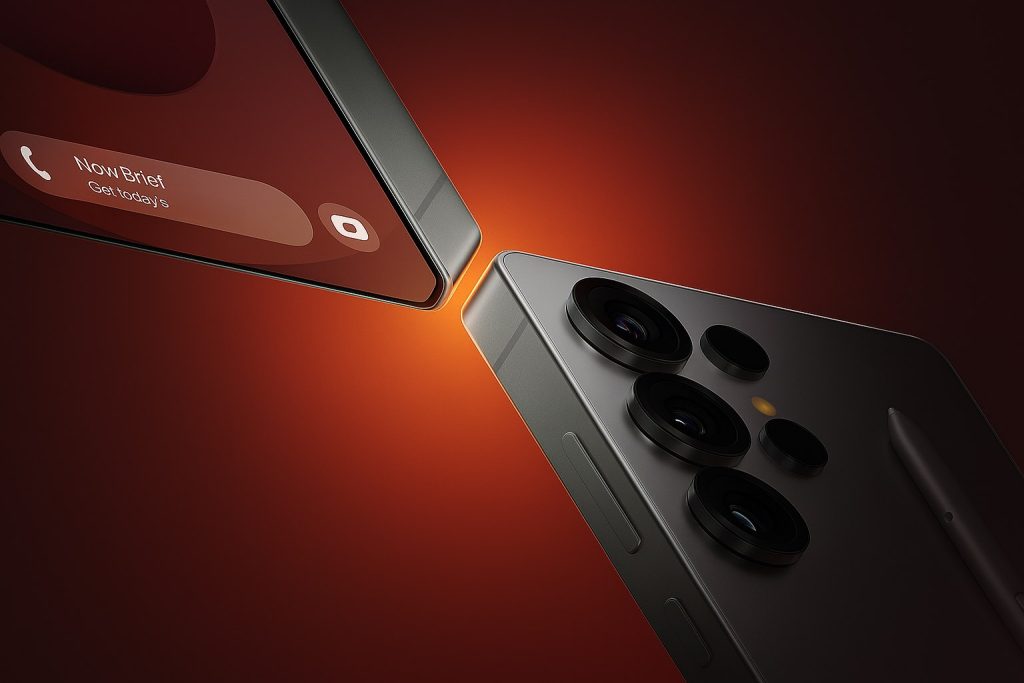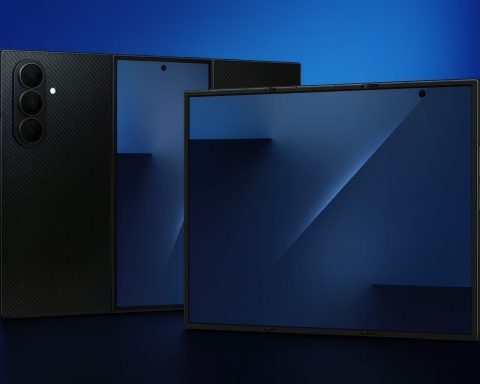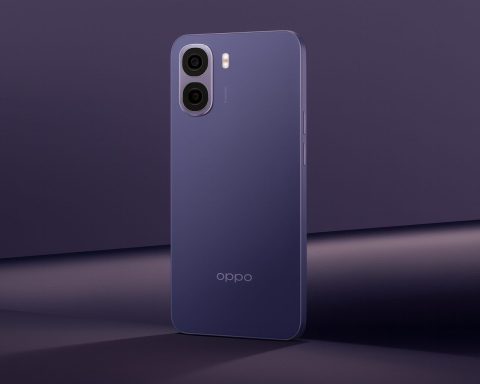- All Redmi Note 14 models use a 6.67-inch AMOLED display with 120Hz refresh rate, with the Pro and Pro+ offering a 2712×1220 1.5K resolution and up to 3000 nits brightness, while the base Note 14 sticks to 2400×1080 with around 2100 nits and HDR10+ support on the Pro variants (Dolby Vision on the Pro models).
- Pro and Pro+ bodies feature IP68 dust/water resistance (in some versions tested up to IP69K) with aluminum frames and premium finishes, whereas the base Note 14 has IP64 (IP54 on some 4G variants) and a plastic back.
- The Redmi Note 14 Pro+ 5G runs the Snapdragon 7s Gen 3, the Note 14 Pro 5G uses Dimensity 7300-Ultra, and the base Note 14 5G uses Dimensity 7025-Ultra (with a Helio G99 Ultra 4G variant in some regions).
- Note 14 Pro+ and Pro come in 8GB/12GB RAM configurations with up to 512GB of UFS 3.1 storage, while the base Note 14 uses 6GB/128GB or 8GB/256GB with a microSD slot up to 1TB and RAM extension available on the Pro models.
- The camera setup scales across the lineup: Pro+ (China/India) features a 50MP main with OIS plus a 50MP telephoto (2.5×) and an 8MP ultrawide, while the global Pro+ uses a 200MP main (Samsung HP3) with no telephoto; the Pro and base Note 14 use a 50MP main + 8MP ultrawide + 2MP macro, with a 20MP front camera on all.
- Battery capacities are 6200 mAh on the Pro+, 5500 mAh on the Pro, and 5110 mAh on the base Note 14, with charging up to 90W (China/India) or 120W (global Pro+), 45W for the Pro and base (33W on some 4G variants), and full charges around 20–25 minutes for Pro+ with the high-watt charger.
- All three run HyperOS based on Android 14 at launch, with HyperOS 2.0 (Android 15) rolling out in 2025, and Pro/Pro+ receiving 3 major OS updates and 4 years of security patches while the base Note 14 5G gets 2 OS updates and 4 years security patches.
- Pricing and availability began in China in September 2024, with Pro+ 12GB+256GB priced at ¥1,899 and 12+512GB at ¥2,099; India launched the Pro and Pro+ in December 2024 (₹24,999–₹26,999 for Pro; ₹30,999–₹35,999 for Pro+); Europe/global arrived in January 2025 (Pro+ around €349–€399, UK around £349, US imports about $379).
- On performance, the Snapdragon 7s Gen 3 in the Pro+ yields higher GPU/overall scores (~807K AnTuTu 10) than the Dimensity 7300 (~669K), and GeekBench single-core is about 11% higher on the Snapdragon variant.
- Industry reviews praise the lineup for high value, noting Pro+ offers flagship-like display, telephoto on China/India, a large battery, premium build, and strong camera performance for the price, with regional differences in telephoto availability and included chargers.
Xiaomi’s Redmi Note 14 series has set a new benchmark in the mid-range smartphone market with feature-packed hardware, AI-driven software, and aggressive pricing [1]. The lineup includes the Redmi Note 14 Pro+, Redmi Note 14 Pro, and the standard Redmi Note 14, each targeting different segments while offering tremendous value. This comprehensive report compares these three models across all key aspects – from displays and processors to cameras and pricing – with up-to-date details as of August 2025. We’ll also include expert review insights, pros and cons, and a peek at upcoming Redmi releases.
Display & Design
Screen Technology: All three phones sport a 6.67-inch AMOLED display with a smooth 120Hz refresh rate for fluid scrolling [2] [3]. The Pro and Pro+ models step up to a sharper “1.5K” resolution (2712×1220) with peak brightness up to a blazing 3000 nits for superior outdoor visibility. The standard Note 14 sticks to Full HD+ (2400×1080) with a still-bright ~2100 nit peak [4]. Importantly, Redmi Note 14 Pro and Pro+ feature curved-edge displays for a more immersive, premium look [5], whereas the Note 14 has a flat panel. All screens are HDR-capable (with Dolby Vision support on the Pro variants) and protected by tough glass: Gorilla Glass Victus 2 on the Pro/Pro+ and Gorilla Glass 5 on the base model [6] [7].
Build Quality: Xiaomi has given these mid-rangers a surprisingly robust build. Redmi Note 14 Pro+ and Pro boast IP68 dust/water resistance (even tested against immersion and high-pressure water jets up to IP69K in some versions) [8] [9] – an almost flagship-level durability. The regular Note 14 is splash-proof with an IP64 rating (or IP54 on certain 4G variants) [10] [11]. The Pro/Pro+ use premium materials like aluminum frames and even offer premium finishes – e.g. the Pro+ in “Lavender Purple” comes with a luxe faux-leather textured back that resists fingerprints [12]. In hand, the higher-end models feel solid and upscale; “I was immediately impressed by just how premium the phone feels,” notes one reviewer about the Pro+ [13]. All models include nice extras like stereo speakers (with Dolby Atmos) and even an IR blaster for remote control functionality [14] [15]. One design difference: the camera modules. The Pro+ (China/India version) has a larger square camera bump housing its extra lens, whereas the Pro and base Note 14 have a more streamlined triple-camera layout – but either way, the phones sit stably on a flat surface with minimal wobble despite the camera humps [16].
Ergonomics: The Note 14 series phones are on the larger side (6.7-inch display), but Xiaomi has trimmed down bezels (especially on the curved Pro/Pro+ screens) for an ~86% screen-to-body ratio. The Pro+ weighs around 205–210g (the global version) due to its beefier battery and glass/metal build [17], while the Note 14 Pro comes in slightly lighter (~196g) [18]. The base model’s plastic back helps keep weight reasonable (~196g) [19]. All three have an optical in-display fingerprint reader, though one reviewer noted the sensor on the Pro+ can be a bit finicky at times, requiring an extra try to recognize the thumb [20]. Overall, design and build are a strong point for this lineup – Xiaomi even incorporates an “All-Star” internal armor with impact-absorbing foam in the Pro models to improve drop resistance [21], underscoring the durability focus.
Processor, Memory & Performance
Chipsets: Each model in the Note 14 family comes with a different processor, reflecting its tier. The Redmi Note 14 Pro+ 5G is powered by the Qualcomm Snapdragon 7s Gen 3 (4nm octa-core) – a brand-new 7-series chip that made its global debut in this device [22]. It features modern Cortex-A720 performance cores up to 2.5GHz and an Adreno 810 GPU, delivering excellent mid-range performance with efficient power use [23] [24]. The Redmi Note 14 Pro 5G instead uses MediaTek’s Dimensity 7300-Ultra (6nm octa-core, up to 2.5GHz) [25], which is a capable chip but built on slightly older CPU cores (Cortex-A78/A55). Meanwhile, the standard Redmi Note 14 5G runs on a MediaTek Dimensity 7025-Ultra SoC (octa-core up to 2.5GHz) [26]. This Dimensity 7025 is viewed as a budget 5G chip – “the only weakness of the Redmi Note 14 is the Dimensity 7025 Ultra chipset, which doesn’t seem to be on par with the rest of the specs,” according to PhoneArena [27]. For regions where a 4G-only Note 14 is sold, that variant packs a Helio G99 Ultra chip [28], which is similar in performance to the 7025 Ultra (both are mid-level chips fine for everyday tasks but not aimed at heavy gaming).
Performance Metrics: In real-world use, all three phones feel snappy for typical apps and multitasking under Xiaomi’s optimizations. That said, the Pro+’s Snapdragon has a performance edge. Benchmarks show the Snapdragon 7s Gen 3 outclasses the Dimensity 7300 in GPU and overall scores – scoring ~807K in AnTuTu 10 vs ~669K for the Dimensity 7300 (about 20% higher) [29]. CPU-wise the gap is smaller (Snapdragon’s newer Cortex-A720 cores give ~11% higher single-core in GeekBench) [30]. In practice, Redmi Note 14 Pro+ handles gaming surprisingly well – testers were able to push titles like Call of Duty Mobile to ~60fps or even ~90fps using Xiaomi’s “Game Turbo” mode [31] [32]. The Note 14 Pro’s Dimensity chip is not far behind for most tasks, but its GPU is weaker (midrange Mali-G615) so intensive 3D games will run at slightly lower settings. The base Note 14 (Dimensity 7025) is adequate for casual use but can bottleneck under heavy loads – expect slower app launch times and limited graphics in games [33]. All models support 5G connectivity (on 5G variants), dual-band Wi-Fi (Pro/Pro+ even support Wi-Fi 6/6E), and NFC for payments [34].
Memory & Storage: Xiaomi offers generous configurations. Redmi Note 14 Pro+ comes with 8GB or 12GB of LPDDR5 RAM, and up to 512GB of fast UFS 3.1 storage in top trims [35]. The Note 14 Pro is typically sold in 8GB RAM variants (128GB or 256GB UFS 2.2 storage) [36]. The base Note 14 starts at 6GB RAM + 128GB (with 8GB/256GB as an option) [37] [38]. Notably, all three include a microSD slot (hybrid) for storage expansion up to 1TB [39] [40] – a welcome feature as many brands drop expandable storage. With Xiaomi’s RAM extension feature, an extra 4GB of virtual RAM can be allocated from storage on the Pro models for better multitasking [41].
Overall, Redmi Note 14 Pro+ delivers the highest performance and is better suited for power users or mobile gamers, whereas the Note 14 Pro offers a solid middle ground. The regular Note 14 is perfectly fine for everyday social media, streaming, and light gaming, but it’s the least future-proof in raw horsepower [42].
Camera Systems
Rear Cameras: Camera capabilities see a significant step-up as you move up the lineup. The Redmi Note 14 Pro+ (China/India version) features a triple-lens setup led by a 50 MP main camera (OmniVision OV Light Hunter 800 sensor) with f/1.7 aperture and OIS for stabilized shots [43]. Uniquely, the Pro+ adds a 50 MP telephoto lens (2.5× optical zoom, ~60mm focal length) – a rarity in this price segment – allowing for lossless zoom and portrait shots [44]. An 8 MP ultra-wide (120° FoV) completes the trio. This setup gives the Pro+ excellent versatility in photography, covering wide landscapes to zoomed shots. In contrast, the Redmi Note 14 Pro (and the base Note 14) do not have a telephoto lens – they come with a standard 50 MP wide + 8 MP ultra-wide + 2 MP macro configuration [45] [46]. The 50 MP primary on the Note 14 Pro is a Sony LYT-600 sensor [47], which, while high-resolution, is a step below the Pro+’s OV sensor in low-light performance. The 2 MP macro on these models is mostly for fun close-ups; it lacks the resolution for crisp detail, and as one reviewer noted, it’s a bit hidden in the camera UI and of limited use [48] [49]. The standard Redmi Note 14 5G also uses a 50 MP main camera (LYT-600) plus 8 MP ultra-wide and 2 MP macro [50]. It forgoes any telephoto or depth sensor – a sensible choice focusing on the two useful cameras. There is a twist in the tale for global markets: the global variant of the Redmi Note 14 Pro+ swaps the 50MP+50MP setup for a 200 MP main camera (Samsung HP3 sensor) without a telephoto lens [51] [52]. So, depending on region, the Pro+ either emphasizes optical zoom (China/India) or sheer resolution (Global). “Personally, I’d rather see Xiaomi bring that 50+50 setup to the global version, too. A high megapixel count is cool, but camera quality isn’t just about numbers,” one PhoneArena editor opined, noting that the 200MP global model excelled in main photo quality but lagged in zoom due to the missing telephoto [53].
Image Quality: In daylight, all three phones can capture sharp, vibrant images – Xiaomi’s imaging algorithms and the large sensors (50MP or 108MP) contribute to detailed shots. The Pro+ with its OIS and higher-end sensor pulls ahead in low-light conditions, producing cleaner night photos with better clarity [54] [55]. The Note 14 Pro’s main camera (no OIS) still does well thanks to pixel-binning and AI Night Mode, but you might notice more noise in very dim scenes. The base Note 14’s camera is competent for its class, though it lacks the dynamic range and stability of the Pro models. Ultrawide shots (8MP) are similar across all – decent in good light but soft in detail compared to the main lens. The Pro+ telephoto (if you have that variant) is a game-changer for portraits and distant subjects: its dedicated 2.5× zoom produces far sharper results than digital zoom can [56]. Users in reviews have praised the Pro+ for bringing a usable zoom camera to the mid-range.
Front Camera: All three models feature a 20 MP front-facing camera (f/2.2). It’s housed in a tiny center punch-hole. Selfie quality is quite good – more than sufficient for social media – though not on par with flagship selfie cameras. In fact, an analysis by DxOMark (cited by PhoneArena) found the Redmi Note 14 Pro+’s selfie performance to be a relative weak spot compared to its rear camera, only average for detail [57]. Still, under decent lighting you can get very nice selfies and 1080p video from these 20MP shooters. (Notably, a 32 MP selfie camera is present on the Note 14 Pro 4G variant [58], but that model is niche.)
Video: Video recording maxes out at 4K 30fps on the rear for Pro/Pro+ (the base Note 14 is limited to 1080p30) [59] [60]. All can do 1080p at 60fps. The absence of 4K60 or any stabilization on the ultrawide limits the video prowess, but the main cams (especially Pro+) produce nicely detailed 4K footage in good light. Electronic stabilization helps a bit for handheld shooting. For casual videos and vlogging, these phones are serviceable, but if 4K60 or pro-grade video is a priority, they might fall short of some higher-end rivals.
AI and Camera Features: Xiaomi heavily advertises the AI photography features in the Note 14 series. The new Xiaomi Imaging Engine and “AI-boosted” algorithms enable things like End-to-End AI Remosaic for ultra-detailed 200MP shots (on the global Pro+) [61], Smart ISO Pro for improved HDR processing [62], and a suite of creative tools: AI Erase, AI Image Expansion, AI Bokeh, AI Beautify, etc. [63] [64]. Both Pro models also have nifty additions like AI Smart Clip for auto-generating video clips and an AI Live Translator that can translate text in the camera viewfinder (the Pro+ supports Live Interpreter mode as well) [65] [66]. Many of these features came via software updates (some unlocked with HyperOS 2.0 in 2025). It’s clear Xiaomi is leaning into AI to enhance the camera experience across the lineup – and for the most part, it succeeds in giving users fun and useful shooting modes that go beyond basic point-and-shoot.
Battery Life & Charging
Battery Capacity: One of the highlights of the Redmi Note 14 series is their high-capacity batteries. The Redmi Note 14 Pro+ (China/India) packs a massive 6,200 mAh battery [67], one of the largest in any mainstream phone, thanks to a new silicon-carbon anode design. The Note 14 Pro carries a sizable 5,500 mAh battery [68], and the base Note 14 5G comes with around 5,110 mAh (typical) capacity [69]. In practice, all three deliver excellent battery life. For example, the base Note 14 (Helio G99 version with 5,500 mAh) clocked nearly 16 hours of web browsing and 13 hours of video playback in PhoneArena’s tests – nearly 8 hours of combined usage endurance [70] [71], which is impressive. The Pro+ with 6,200 mAh can easily achieve 2 days of moderate use on a charge. (The global Pro+ variant has a smaller 5,110 mAh battery [72] to accommodate other components, so its longevity is a bit less, though still very strong.) Looking ahead, rumors suggest the upcoming Note 15 Pro+ will bump the battery to ~7,000 mAh – a huge leap that could make multi-day battery life standard in this line [73] [74].
Charging Speeds: Xiaomi continues its tradition of fast charging. The Note 14 Pro+ supports up to 90W wired fast charging (China/India model) [75], which can refill that 6,200 mAh cell in around 40 minutes. The Note 14 Pro is capped at 45W charging [76], and the base Note 14 5G also supports 45W (while the 4G variant only does 33W) [77]. In India/China retail boxes, Xiaomi includes the fast charger (e.g. a 45W or 90W charger in-box) [78]. However, the global models have a twist: in Europe, Xiaomi did not include the charger with the Pro/Pro+ (to comply with eco-regulations), so buyers may need to purchase a 120W USB-PD charger separately to fully utilize the 90W/120W capability [79] [80]. Using USB Power Delivery, the Pro+ can charge at up to 120W in global version (with a compatible charger), juicing from 0 to 100% in roughly 20-25 minutes as per Xiaomi’s claims. The Pro and base model take longer – roughly 55-60 minutes for a full charge at 45W. All three phones have smart charging algorithms (Battery Health Engine 4.0) to reduce battery wear, including overnight adaptive charging that tops up slowly to 100% by morning [81] [82]. None support wireless charging (still rare at this price). Overall, battery endurance is excellent across the board, and Xiaomi’s fast-charge tech minimizes downtime. The Pro+ especially stands out – “battery life might define the Pro+ this year,” as one report put it, noting its class-leading combination of huge battery and fast charging [83] [84].
Software & User Interface
All Redmi Note 14 series phones run Xiaomi’s new HyperOS 1.0 out of the box (based on Android 14). HyperOS is Xiaomi’s revamped interface (replacing MIUI) focusing on efficiency and AI integration. The look and feel will be familiar to MIUI users – a colorful UI with many customization options – but HyperOS is said to be leaner and better optimized. Reviewers noticed smooth animations and improved app fluency. “Animations and transitions are smooth, [and] the notification pull-down is quicker and nicer laid out than Google’s,” one reviewer noted [85], highlighting HyperOS’s polish. Xiaomi has also bundled Google’s AI (Gemini) alongside its own AI assistant in HyperOS [86], giving users a choice for voice commands and AI features. There is a strong emphasis on device interconnectivity – e.g. HyperOS allows you to seamlessly continue an app’s task on a Xiaomi tablet or laptop, and integrates with Xiaomi’s ecosystem of smart home devices [87].
AI Features: As mentioned earlier, HyperOS brings a host of AI-driven features across the system: from AI subtitles and translation in the video player, to AI note-taking and recorder apps that transcribe and summarize meetings [88]. The camera’s AI tricks (Erase, Magic Sky, etc.) are part of this as well. Xiaomi is clearly using AI as a differentiator for the Note 14 series – especially to appeal to younger users who might enjoy one-tap creative edits and translations on the fly.
Pre-installed Apps: Like most Xiaomi phones, there is a fair bit of bloatware pre-loaded. You’ll find Xiaomi’s own utilities (Mi Browser, Themes, Mi Video, etc.) alongside Google’s apps and some third-party apps/games (Facebook, TikTok, WPS Office, and a handful of preloaded games in some regions) [89] [90]. The good news is that most of these can be uninstalled or disabled. After some cleanup, you can have a relatively tidy interface (Xiaomi even provides a “Cleaner” app to clear residual files).
Updates & Support: Xiaomi has promised extended software support for these devices. Redmi Note 14 Pro and Pro+ will receive 3 major Android OS updates and 4 years of security patches [91] [92], which should carry them through Android 17 by around 2027. The base Redmi Note 14 5G gets 2 years of OS updates and 4 years security updates [93], slightly shorter support reflecting its budget positioning. This policy is notably better than many past Redmi phones, aligning with Xiaomi’s pledge to meet new EU requirements for longer support [94]. Indeed, Android 15 (HyperOS 2.0) was already confirmed for the Note 14 series and started rolling out in early 2025 [95]. By now (Aug 2025), HyperOS 2 based on Android 15 is either on these phones or imminent, bringing performance tweaks and new features. Xiaomi’s update cadence isn’t the fastest (one review unit still had an older security patch at launch [96]), but the commitment to multiple years of updates is reassuring for buyers.
In daily use, HyperOS is fast and feature-rich, though it can be a bit overwhelming for those who prefer a minimal interface. There are a ton of settings to tweak, from MIUI Lab experimental features to granular theming options. The UI supports Always-On Display, Edge lighting effects on the curved screens, gesture navigation, and more. One nifty addition is the “Back Tap” gesture (double tap the phone’s back to trigger actions) introduced in HyperOS [97]. On the whole, Xiaomi’s software on the Note 14 series successfully merges Android 14’s core strengths with Xiaomi’s expansive feature set – just be prepared to disable a few spammy notifications from some stock apps initially (like GetApps store).
Pricing & Availability
One of the biggest advantages of the Redmi Note 14 series is its aggressive pricing for the features on offer. Here’s a breakdown of pricing and availability in key regions:
- China: The Note 14 series debuted in China in September 2024. Prices in China are very competitive. The Redmi Note 14 Pro+ launched at CNY ¥1,899 for 12GB+256GB and ¥2,099 for 12+512GB [98] – roughly $265–$295. The Note 14 Pro (8+128GB) started around ¥1,399 (~$190), with higher variants up to ~¥1,699. The base Note 14 5G was even more affordable, starting near ¥1,099–¥1,199 (≈ $150–$165). These China prices (with local subsidies and lower taxes) make the phones extremely good value on their home turf.
- India: Xiaomi launched the Pro and Pro+ in India in Dec 2024 (the base Note 14 5G followed soon after). Official Indian pricing is as follows: Redmi Note 14 Pro – ₹24,999 for 8+128GB and ₹26,999 for 8+256GB [99] (approximately $300/€280). Redmi Note 14 Pro+ – ₹30,999 for 8+128GB and ₹35,999 for the fully-loaded 12+512GB model [100] [101]. The Redmi Note 14 5G (6+128GB) is around ₹17,999 (≈ $215/€200), with the 8+256GB variant about ₹20,999 (~$250) [102]. These prices undercut many competitors – for example, at ₹30k the Pro+ was one of the cheapest phones with an IP68 rating and telephoto camera. Xiaomi also offered launch discounts (e.g. ₹1000 cashback with certain bank cards) [103], sweetening the deal. Availability in India is through Xiaomi’s official online store, Flipkart, and retail outlets, with sales starting mid-December 2024 [104] [105].
- Europe/Global: The global rollout (for Europe, Southeast Asia, etc.) occurred in January 2025. Europe gets the global variants (e.g. Pro+ with 200MP camera). Prices are a bit higher than in India/China due to import taxes and warranty costs. In Europe, leaked prices indicated the Note 14 4G ~€199–€249, Note 14 5G around €229–€269, Note 14 Pro ~€299, and Note 14 Pro+ around €349–€399 depending on storage [106]. For instance, in the UK the Pro+ launched at £349 for 8+256GB [107]. In the U.S., Xiaomi doesn’t officially sell the Note series, but the global Note 14 Pro+ was available via import around $379 for 8+256GB [108]. Availability globally has been somewhat staggered – some regions got only certain models. In Europe, Xiaomi focused on the Pro and Pro+ initially (often bundled with early-bird deals like free chargers or earbuds) [109] [110]. The base Note 14 5G/4G models have launched in select markets like India, parts of Asia, and limited EU countries under various names (sometimes the 4G model is sold simply as “Redmi Note 14” while the 5G is labeled explicitly in some places).
In summary, the Redmi Note 14 series offers outstanding bang for your buck. As The Economic Times noted, Xiaomi is “offering feature-packed devices at competitive prices” [111]. Whether it’s the budget-friendly Note 14 or the fully-loaded Pro+, each model tends to undercut similar offerings from rivals like Samsung’s Galaxy A-series or Realme’s number series. Xiaomi’s strategy of slight regional variations (camera specs, included accessories, 4G vs 5G variants) means pricing can vary, but the value proposition remains strong across the board.
Expert Reviews & Opinions
The Redmi Note 14 family has garnered largely positive reviews from tech experts, often highlighting the premium features for the price, while noting a few trade-offs. Here are some distilled insights and quotes from trusted reviewers:
- Design & Build: Reviewers have been impressed with the build quality. “If there was no branding on the back, someone could mistake it for a more well-known flagship,” says Neowin, praising how premium the Note 14 Pro+ feels in hand [112]. The inclusion of extras like a pre-applied screen protector and an in-box case (in some regions) drew positive nods [113], as many competitors skimp on these. The only minor gripe was the glossy mid-frame on the Pro/Pro+ – Neowin pointed out it can pick up micro-scratches and would’ve been better in matte finish [114]. Still, the overall consensus is that Xiaomi delivered a “great design with high-end touches for mid-range money.” The Lavender Purple faux-leather variant in particular got compliments for its smudge-free, grippy texture [115].
- Display: The 6.67″ AMOLED screens (especially the 1.5K, 120Hz panels on Pro models) were lauded as excellent for this class. They are bright, colorful, and smooth. Tech sites noted the peak brightness hitting the claimed 3000 nits in auto mode, making the phones easily viewable under harsh sunlight [116]. The high 2712×1220 resolution on the Pro/Pro+ yields ~446 ppi sharpness, a step above typical 1080p displays [117]. Reviewers also liked the HDR10+/Dolby Vision support – HDR videos look punchy. PhoneArena rated the base model’s display as “Excellent” for its category [118], with only a note that its peak brightness (2100 nits) while very high, is a bit lower than the Pro siblings. Overall, the display quality across the lineup punches above price, offering a truly immersive viewing experience.
- Performance: General performance was found to be snappy on all models for daily use. Even the base Note 14’s Dimensity 7025 handled typical tasks without lag, though gamers will notice the difference between the models. “The 7s Gen 3 chipset can pull 50-60fps on average, boosting to ~90fps in some games with Game Turbo,” reported Neowin about the Pro+’s gaming chops [119]. The Note 14 Pro (Dimensity 7300) was also deemed smooth for gaming at medium settings – its thermal performance is solid thanks to a vapor chamber cooling system. However, experts do mention that the Snapdragon 7s Gen 3 in the Pro+ outperforms the Dimensity 7300 in graphics: “GPU score falls in line with a 2021 flagship (Snapdragon 870 class),” meaning the Pro+ can handle heavier games better [120]. Benchmarks aside, day-to-day difference between Pro and Pro+ isn’t huge for most apps. The base model’s chip is the weakest link, as PhoneArena bluntly stated – it’s perfectly fine for messaging, YouTube, etc., but “doesn’t match the rest of the specs” like the high-refresh display [121]. On the software side, HyperOS was generally well-received for its fluidity and rich features, though some reviewers noted the presence of bloatware that users may want to remove. Xiaomi’s commitment to updates also earned praise, aligning the Note series closer to some premium phones in software support timeframe [122].
- Cameras: The camera performance of the Note 14 Pro+ especially drew positive comments, with caveats. The presence of a telephoto lens on a mid-range phone was widely applauded – reviewers found the 2.5x tele lens on the Pro+ takes good images in daylight and adds versatility no other phones in this segment offer. The main 50MP camera on the Pro+ (China/India) was described as reliably producing crisp shots in most conditions, though one Neowin reviewer noted the camera software might need further tuning: “the 200MP sensor [on the global version] isn’t as optimally performant as I’d like, at least not on the current HyperOS version” [123]. This suggests that while capable, the huge 200MP mode could be slow or not dramatically better than the binned 12MP output. PhoneArena’s camera tests gave the global Note 14 Pro+ a score of 128 for rear camera quality – very good for its class – but observed that without a telephoto, its zoom score was low [124]. The Note 14 Pro (50+8+2) performs about the same as the base Note 14 since they share camera hardware; reviews found their photos to be decent in good light, but low-light required steady hands due to lack of OIS. The front camera quality was satisfactory but not standout; selfies can turn out soft in indoor lighting. Overall, experts think Xiaomi prioritized the right things (main sensor and tele on Pro+; solid main cameras on others) but the secondary cameras (2MP macro, basic ultrawide) are just average. Still, considering the price, the camera setups, especially on the Pro+, were often described as “above average… Redmi is raising the bar for mid-tier photography” [125].
- Battery & Charging: Here the feedback is unequivocally positive. With 5000+ mAh batteries across the lineup, battery life is a strong suit. Many reviewers reported getting 7-8+ hours of screen-on time easily. A Neowin test of the Pro+ noted that with moderate use it “lasted well into the second day”, and that’s with the global model’s smaller 5110 mAh pack. The charging speeds impressed as well – topping up ~50% in just 15 minutes on the Pro+ with the 120W charger was a game changer for heavy users. The Note 14 Pro’s 45W charging is not the fastest around, but still refills faster than many competitors that stick to 25W or 30W in this range. One thing reviewers cautioned: the global omission of an included charger for Pro models – this cost-saving (or eco-friendly) measure by Xiaomi means users have to ensure they have a compatible fast charger to enjoy the full charging speeds [126]. Nonetheless, the consensus is that battery anxiety is virtually non-existent with these phones, and Xiaomi’s fast charge implementation is reliable and safe (the phones manage heat well when fast-charging).
In summary, tech experts view the Redmi Note 14 series as one of the best value smartphone lineups of 2024-2025. They deliver flagship-like features (high-quality display, big battery, water resistance, even a telephoto lens in Pro+) at mid-range prices. The few criticisms – chipset choices on the lower model, the 2MP macro camera filler, some software bloat – are relatively minor in the face of the overall package. As one publication’s headline put it, “high-end looks for mid-range money” is what the Redmi Note 14 Pro+ embodies [127], and that sentiment extends to its siblings too.
Pros and Cons of Each Model
To wrap up the comparison, let’s break down the key pros and cons of the Redmi Note 14 Pro+, Note 14 Pro, and Note 14:
- Redmi Note 14 Pro+ (5G)
- Pros: Top-tier display and build – 120Hz curved AMOLED with 1.5K resolution and IP68 durability. Powerful chipset (Snapdragon 7s Gen 3) with excellent performance for apps and games [128]. Versatile camera setup – high-quality 50MP main sensor with OIS, plus a useful 50MP telephoto zoom (in China/India) for portraits and distant shots [129]. Enormous 6200 mAh battery that easily lasts 2 days, with super-fast 90W/120W charging to fill it in ~30 minutes [130]. Premium extras like stereo speakers, IR blaster, and included case/screen protector add value [131] [132].
- Cons: Higher price (it’s the costliest Note 14 model) – approaching mid-high-end pricing at ~$350+ globally [133]. The global variant lacks the telephoto lens, relying on a 200MP sensor that doesn’t significantly improve real-world photos [134]. The phone is quite heavy (~205g) which some might find unwieldy for one-handed use. Optical fingerprint sensor can be finicky, as noted in reviews [135]. Lastly, Xiaomi’s decision to omit a charger in some regions means extra expense for global buyers to get the full 120W charging speed [136].
- Redmi Note 14 Pro (5G)
- Pros: Flagship-grade display features – same gorgeous 6.67″ 120Hz AMOLED (1.5K resolution, 3000 nits, Victus 2 glass) as the Pro+. Sturdy build with IP68 water resistance which is rare at its price [137]. The Dimensity 7300-Ultra chip delivers smooth performance for daily use and moderate gaming [138]. Main camera is a solid 50MP shooter that takes detailed photos similar to the base model (good quality in ample light). Large 5500 mAh battery gives it an endurance edge over many rivals, and 45W fast charge is handy [139]. Competitive pricing – significantly cheaper than the Pro+ while retaining most of its features.
- Cons: No telephoto lens – camera setup is identical to cheaper Note 14 (50+8+2MP), so you miss out on zoom capability [140]. The 2MP macro lens is low-impact (more of a spec sheet filler). Performance is a step below the Pro+, especially for GPU-intensive tasks (the Mali-G615 GPU can struggle with high settings in games). Charging, while decent, is half the wattage of the Pro+ and no wireless charging. Though it has IP68, the overall feature set is closer to the base model, so some might find its value proposition squeezed between the cheaper Note 14 and the more feature-rich Pro+. Essentially, it’s a great phone but sits in the Pro+’s shadow.
- Redmi Note 14 (5G) (Standard model)
- Pros: Unbeatable value – one of the most affordable phones offering a 6.67″ AMOLED 120Hz display [141], a capable 50MP camera, 5G connectivity, and a big battery. Lightest of the trio, with a flat design that some prefer (no curved edges, so no accidental touches). Still has premium touches like stereo speakers, Gorilla Glass 5, and an IP rating (IP64 splash resistance) [142]. The Dimensity 7025 Ultra SoC is efficient and paired with 5,110 mAh battery, it yields excellent battery life in practice [143]. Supports 45W fast charging – better than many entry-level phones. Expandable storage and 3.5mm headphone jack provide flexibility that power users appreciate [144] [145]. Priced around $200, it’s a fantastic everyday smartphone for the money.
- Cons: Raw performance is mid-range at best – the chipset can lag with heavy multitasking or high-end games [146]. It’s fine for casual use, but power users will want more. The camera lacks extras – no OIS, no telephoto, and the 2MP macro and 8MP ultrawide are just average in quality. Low-light photography and video stabilization are weaknesses compared to the Pro models. Build is a bit less premium – plastic back and only IP64 means it’s not as rugged as the Pro variants (though it’s still well-built for its class) [147]. Xiaomi also only promises 2 Android version updates for this model [148], so its software support is shorter. Essentially, the Note 14 is a great budget phone but naturally feels like the “lite” option next to its Pro siblings, trading some performance and features for a lower price.
Upcoming Models & Rumors
Xiaomi shows no signs of slowing down its release cadence. As of August 2025, the Redmi Note 15 series is already on the horizon. In fact, Xiaomi has teased the Redmi Note 15 Pro and 15 Pro+ with an expected China launch by end of August 2025 [149] [150]. Here’s what the rumor mill and early leaks suggest about the upcoming models:
- Redmi Note 15 Pro+ – The successor to the Note 14 Pro+ is tipped to bring three major upgrades: a next-gen Snapdragon 7s Gen 4 chipset, an even larger battery ~7000 mAh, and a refined design with quad-curved 1.5K OLED display and symmetrical slim bezels [151] [152]. The camera setup is expected to remain 50 MP main + 50 MP telephoto + ultrawide, similar to the Note 14 Pro+ Chinese version [153]. The jump to ~7000 mAh (almost 13% bump over the current 5110 mAh global battery) could make battery life a standout feature [154]. Charging speeds might also improve or at least remain in the 100W+ territory. In essence, the Note 15 Pro+ seems to be “leveling up where it counts” – particularly in battery endurance and maintaining the telephoto lens advantage [155] [156]. The design teasers show a familiar look (the Note 15 series closely resembles the Note 14’s style) [157] [158], but possibly with even more premium touches.
- Redmi Note 15 Pro – Expected to launch alongside, the Note 15 Pro will likely feature a MediaTek chipset (rumored Dimensity series) for the 5G model, and possibly a Snapdragon for any 4G variant [159]. It should inherit features like the 1.5K 120Hz display and large battery (perhaps around 5500–6000 mAh) but without a telephoto lens (following the current pattern). We might see the main camera upgraded (there’s speculation of a new sensor or improved 50MP module). Xiaomi’s teasers indicate multiple models in the “Pro series” launch, so a Note 15 Pro and Pro+ are certain, with an entry-level Note 15 5G also planned [160].
- Redmi Note 15 / 15 5G – The standard Note 15 (successor to Note 14) is expected to switch from MediaTek to a Qualcomm 5G chipset according to leaks [161] [162]. This could mean something like a Snapdragon 6 series or 7 series chip for the base model, which might improve performance over the Dimensity 7025. A Redmi Note 15 4G is also rumored for global markets that need a lower-cost option, likely reusing a Helio series chip [163]. We’ve even seen Xiaomi quietly launch a device named Redmi 15 5G globally in August 2025 – which seems to be a non-Note model aimed at budget segment, possibly to complement the Note series in lower tiers [164] [165]. It sports an affordable pricing (~€240 in Europe) and might share some components with the Note 14/15 series (like a 50MP camera).
- Related Xiaomi/Redmi Phones: Besides the Note line, Xiaomi’s flagship Xiaomi 14 series launched with HyperOS in late 2024, and a Xiaomi 14T/14 Ultra refresh is expected in late 2025 with cutting-edge specs (these are high-end devices, not directly Note-related, but show HyperOS progression). In the Redmi family, the Redmi K70 series (successors to the K60/K50, known for flagship-grade specs at mid-range prices) is expected later in 2025 in China, and could be rebranded globally as POCO phones. Also noteworthy, rumors mention the Poco X8 being tied to a Redmi Note 15 Pro design for global release [166] – Xiaomi often rebrands Redmi Notes for the Poco lineup internationally.
Overall, if you’re considering the Redmi Note 14 series now, know that Xiaomi is likely to refresh the lineup on an annual cycle. The Redmi Note 15 Pro/Pro+ are imminent, promising incremental but meaningful improvements (especially a giant battery for the Pro+ and a newer Snapdragon chip) [167]. However, those will initially launch in China; global availability might lag by a few months. Xiaomi’s strategy of offering both 5G and 4G variants will likely continue to cater to different markets. And given Xiaomi’s aggressive approach, we can expect the Note 15 series to also come with eye-popping specs for the price – potentially making the excellent Note 14 series even cheaper once successors arrive. Keep an eye on Xiaomi’s late-year announcements for the official details on the Note 15 lineup, as it could set a new standard for mid-range smartphones just as the Note 14 series did.
Conclusion
Choosing between the Redmi Note 14 Pro+, Pro, and Note 14 comes down to your priorities and budget. The Redmi Note 14 Pro+ 5G is the no-compromise choice – it offers flagship-like features (best display, fastest chip, most versatile cameras, highest water resistance) at a fraction of flagship prices. It’s ideal for power users who want a premium experience without spending top-dollar. The Redmi Note 14 Pro 5G strikes a balance – you get the same beautiful screen and solid performance, plus a huge battery, but save some money by forgoing the telephoto camera and some charging speed. It’s a great value for those who want a capable mid-ranger with a touch of premium, and its lower cost makes it a savvy choice for most people who don’t absolutely need the Pro+’s extras. The Redmi Note 14 (5G), finally, is all about maximum value. It covers the fundamentals (strong battery life, decent performance, good display) at an ultra-aggressive price; it’s perfect for students, budget-conscious buyers, or as a reliable second phone. As one publication summarized, Xiaomi is “upping the notch for the mid-tier segment” with the AI features and above-average hardware in these devices [168] [169]. Indeed, the Redmi Note 14 series has blurred the line between mid-range and high-end, bringing features like 200 MP cameras and IP68 bodies into a price bracket once unthinkable for such perks.
In the highly competitive smartphone market of 2025, the Redmi Note 14 trio stand out as easy recommendations in their respective segments. Whether you go for the all-out Pro+, the balanced Pro, or the budget Note 14, you’re getting a phone that punches well above its weight. And with Xiaomi’s robust update policy, these phones should remain fresh with new features and security for years to come [170]. Just be aware of the regional differences (camera specs and charging accessories) when making your purchase. Looking ahead, Xiaomi’s next iterations like the Note 15 series promise even more, but as of today the Redmi Note 14 series remains one of the best smartphone values money can buy. In short, Xiaomi delivered a hat-trick with the Note 14, Note 14 Pro, and Pro+ – each one a winner in its category, collectively raising the bar for what consumers can expect from mid-range phones in 2025.
Sources: Redmi Note 14 Launch News (The Economic Times) [171] [172]; PhoneArena Global Launch Report [173] [174]; Neowin Review [175] [176]; Xiaomi India/Global Spec Sheets [177] [178]; NotebookCheck & PhoneArena Leaks [179] [180]; and various expert reviews and benchmarks [181] [182].
References
1. economictimes.indiatimes.com, 2. www.phonearena.com, 3. economictimes.indiatimes.com, 4. www.phonearena.com, 5. www.neowin.net, 6. www.mi.com, 7. www.mi.com, 8. www.phonearena.com, 9. economictimes.indiatimes.com, 10. www.mi.com, 11. www.mi.com, 12. bookofadamz.com, 13. www.neowin.net, 14. www.neowin.net, 15. www.mi.com, 16. www.neowin.net, 17. www.neowin.net, 18. www.phonearena.com, 19. www.phonearena.com, 20. www.neowin.net, 21. www.neowin.net, 22. www.mi.com, 23. nanoreview.net, 24. nanoreview.net, 25. economictimes.indiatimes.com, 26. www.mi.com, 27. www.phonearena.com, 28. www.mi.com, 29. nanoreview.net, 30. nanoreview.net, 31. www.neowin.net, 32. www.neowin.net, 33. www.phonearena.com, 34. www.neowin.net, 35. www.phonearena.com, 36. www.phonearena.com, 37. www.phonearena.com, 38. www.phonearena.com, 39. www.91mobiles.com, 40. www.phonearena.com, 41. www.neowin.net, 42. www.phonearena.com, 43. www.phonearena.com, 44. www.phonearena.com, 45. www.phonearena.com, 46. www.phonearena.com, 47. economictimes.indiatimes.com, 48. bookofadamz.com, 49. bookofadamz.com, 50. www.phonearena.com, 51. www.neowin.net, 52. www.phonearena.com, 53. www.phonearena.com, 54. www.mi.com, 55. www.mi.com, 56. www.phonearena.com, 57. www.phonearena.com, 58. www.mi.com, 59. www.mi.com, 60. www.phonearena.com, 61. www.mi.com, 62. www.mi.com, 63. www.mi.com, 64. bookofadamz.com, 65. economictimes.indiatimes.com, 66. www.mi.com, 67. economictimes.indiatimes.com, 68. economictimes.indiatimes.com, 69. www.mi.com, 70. www.phonearena.com, 71. www.phonearena.com, 72. www.neowin.net, 73. www.phonearena.com, 74. www.notebookcheck.net, 75. economictimes.indiatimes.com, 76. economictimes.indiatimes.com, 77. www.mi.com, 78. www.mi.com, 79. www.neowin.net, 80. www.neowin.net, 81. www.mi.com, 82. www.mi.com, 83. www.phonearena.com, 84. www.phonearena.com, 85. www.neowin.net, 86. www.neowin.net, 87. www.mi.com, 88. www.mi.com, 89. bookofadamz.com, 90. bookofadamz.com, 91. www.phonearena.com, 92. www.phonearena.com, 93. www.phonearena.com, 94. www.neowin.net, 95. www.neowin.net, 96. www.neowin.net, 97. www.neowin.net, 98. www.moneycontrol.com, 99. economictimes.indiatimes.com, 100. economictimes.indiatimes.com, 101. www.phonearena.com, 102. www.phonearena.com, 103. economictimes.indiatimes.com, 104. economictimes.indiatimes.com, 105. economictimes.indiatimes.com, 106. www.neowin.net, 107. www.neowin.net, 108. www.phonearena.com, 109. www.neowin.net, 110. www.neowin.net, 111. economictimes.indiatimes.com, 112. www.neowin.net, 113. www.neowin.net, 114. www.neowin.net, 115. bookofadamz.com, 116. www.neowin.net, 117. www.neowin.net, 118. www.91mobiles.com, 119. www.neowin.net, 120. www.neowin.net, 121. www.phonearena.com, 122. www.neowin.net, 123. www.neowin.net, 124. www.phonearena.com, 125. www.phonearena.com, 126. www.neowin.net, 127. bookofadamz.com, 128. nanoreview.net, 129. www.phonearena.com, 130. economictimes.indiatimes.com, 131. www.neowin.net, 132. www.neowin.net, 133. www.phonearena.com, 134. www.phonearena.com, 135. www.neowin.net, 136. www.neowin.net, 137. www.phonearena.com, 138. www.phonearena.com, 139. economictimes.indiatimes.com, 140. www.phonearena.com, 141. www.phonearena.com, 142. www.mi.com, 143. www.mi.com, 144. www.phonearena.com, 145. www.phonearena.com, 146. www.phonearena.com, 147. www.mi.com, 148. www.phonearena.com, 149. www.notebookcheck.net, 150. www.notebookcheck.net, 151. www.phonearena.com, 152. www.phonearena.com, 153. www.notebookcheck.net, 154. www.notebookcheck.net, 155. www.phonearena.com, 156. www.phonearena.com, 157. www.notebookcheck.net, 158. www.notebookcheck.net, 159. www.notebookcheck.net, 160. www.notebookcheck.net, 161. www.notebookcheck.net, 162. www.notebookcheck.net, 163. www.notebookcheck.net, 164. www.notebookcheck.net, 165. www.notebookcheck.net, 166. www.notebookcheck.net, 167. www.phonearena.com, 168. www.phonearena.com, 169. www.phonearena.com, 170. www.phonearena.com, 171. economictimes.indiatimes.com, 172. economictimes.indiatimes.com, 173. www.phonearena.com, 174. www.phonearena.com, 175. www.neowin.net, 176. www.neowin.net, 177. economictimes.indiatimes.com, 178. www.mi.com, 179. www.phonearena.com, 180. www.notebookcheck.net, 181. nanoreview.net, 182. www.phonearena.com










